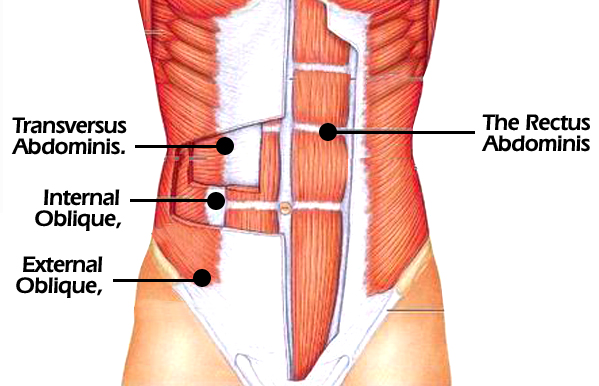
Stop letting your core training go to waste!
Good form is always the most important thing in exercise. It’s more important than your range of motion, it’s more important than how much resistance you can use, and it’s more important than whether or not you finish all of your reps. If you can’t maintain proper form then an exercise becomes useless in the sense that it simply reinforces bad movement patterns. When someone doesn’t understand what an exercise should feel like and you tell them to move a body part from point A to point B, their body will do it through the path of least resistance. It may even look very close to being right, but your body has a sneaky way of bypassing the muscles that have become dormant, and using the ones that it likes using. This is what leads to the imbalances that cause injuries.
Core training is an area where this happens frequently, and with good reason. Our body often wants to bypass using our abs and glutes because they’re weak. Our bodies become so used to utilizing our low back muscles and hip flexors for everything that it’s become much harder to get our untrained abs to activate and do their job. Often times when we do get our abs or glutes to work at all, we’re just flying through reps and using as much momentum as we can to aid the muscles in getting their job done.
Why is core training so important?
If there’s an area where we should be paying special attention to form and technique, it’s in our core training. With the prevalence of back pain (85% of Americans suffer from it at some point) we should be doing everything we can to try to counteract this problem. It just so happens that core muscle endurance is a top predictor for whether or not someone will suffer from back pain. So, it stands to good reason that by developing our core strength with good form and technique we’re not only preventing people from getting injured while working out, but also preventing them from getting injured at work, in sport, or while performing any of the other activities that they enjoy.
When it comes to training the core, there are really two different categories that we can fit most exercises in to, movement and stabilization. Movement consists of producing forces that create movement through the spine (spinal flexion, extension, and rotation). Think crunches, back extensions, and twists. Stabilization refers to creating forces that resist these same patterns and creates what we call anti-flexion, anti-extension, and anti-rotation. For these think bird dogs, dead-bugs, and Paloff presses. While all of these patterns are important, we often put emphasis first on training the anterior core (abs/obliques) because it is such a common weak link in an area that really needs to be strong.
How do we fix anterior core training form?
The patterns we usually start with are flexion and anti-extension, because both hit the anterior core (abs/obliques). In movement-based exercises, the most common compensation that we see is using momentum to overcome the difficulty of the exercise. Generally, when someone is trying to create force they’ll try to move through the exercise as quickly as possible because momentum makes the exercise easier. The solution to this is as simple as taking the momentum out of it. In the case of flexion exercises (like crunch variations), this means concentrating on the feeling of squeezing the abs, moving slowly during the exercise, and using the abs to create a forceful exhale during the portion of the exercise where they’re doing the most work. In exercises that involve creating stability through the spine we have to look for more subtle clues as to whether or not the exercise is being performed correctly.
The thought process is still the same with anti-extension exercises (we’re back to thinking about dead-bugs and planks). Here we really want to focus on the feeling of keeping the ribs pulled down toward the hips and keeping the back pressed into the ground. The pressure that your back exerts on the ground should remain consistent throughout the movement, if it’s not then you know you’re compensating somewhere. The key on these drills though is really your breath and using your abs to exhale. If you time your breath right then your abs have to tighten to push all of the air out of your lungs at the same time that they have to tighten to keep your back straight. Simply think about exhaling as your resistance moves further away from your body and you’ll get more bang for your buck.
Steve Zarriello B.S., CSCS, TPI Certified, is the Owner of Olympia Fitness and Performance in Cranston, R.I. He has been a strength and conditioning coach for almost 15 years and has trained athletes of all sports and levels, but his passion is training golfers to keep them injury free and help them improve their game.

